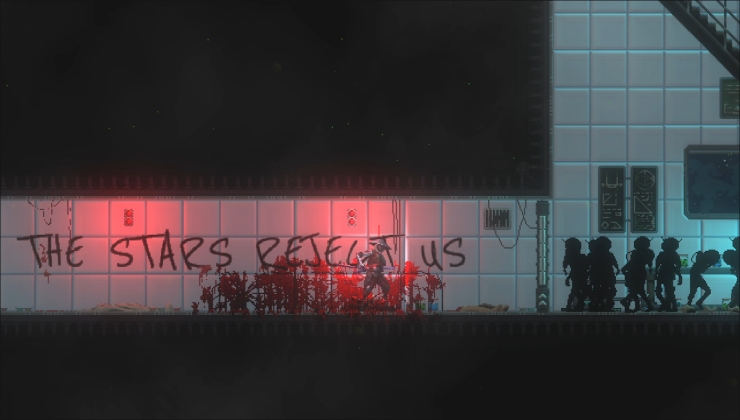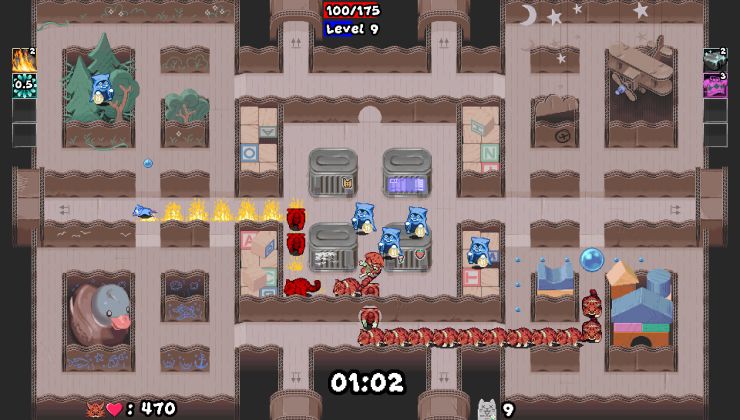Fedora 41 is officially out now and brings with it plenty of upgrades for all users. Here's just some of what's new and improved.
If you stick with Fedora Workstation you'll get the newer GNOME 47 that comes with lots of additions I covered before like accent colour customization, enhanced small screen support, an improved Files app, a better Online Accounts system and much more.
Specifically in Fedora 41 there's IPU6 Camera support and improvements for Traditional Chinese. A big one is support for installing Nvidia drivers with secureboot, although the process needs a few steps it's good to see it in. There's also a new terminal app with Ptyxis.

Pictured - Fedora 41
There's also the newer DNF 5 package manager, PHP is 64-bit only, Valkey replaces Redis, PipeWire camera sensor support in Firefox and upgrades to various included applications.
See more in the release notes.
Fedora KDE got some nice upgrades too like KDE Plasma 6.2 that has improved Wayland colour management, lots of enhancements for drawing tablets, overhauled accessibility options and so on. There's also a new KDE Plasma Mobile spin.
Dsitros that "just work" and tolerate tech illiteracy and laziness also have their place of courseLaziness FTW!!!
(Otherwise known as "having better things to do")
We're talking about two completely different things.
You are expected to just *know* there is this thing called RPMFusion (that you have to manually enable, and from where to start with, also a mystery as not any website or link is given).
There is also an alternative to rpmfusion, https://negativo17.org/multimedia/ , if you are running NVIDIA, it is worth to explore this. I prefer their way of packaging, it works much better for me.
Edit: ah, missed the recommendation in a few posts earlier.
But I agree on the general point, Fedora is not really beginners friendly with those things.
Last edited by jens on 1 Nov 2024 at 7:41 am UTC
If we are, maybe you could explain? Because I'm seeing no indication. All I saw was a guy calling me tech illiterate and lazy. Which, true enough, but the way techies say that kind of stuff betrays a misunderstanding of what computer use is for.Dsitros that "just work" and tolerate tech illiteracy and laziness also have their place of courseLaziness FTW!!!
(Otherwise known as "having better things to do")
We're talking about two completely different things.
Last edited by Purple Library Guy on 1 Nov 2024 at 2:57 pm UTC
If we are, maybe you could explain? Because I'm seeing no indication. All I saw was a guy calling me tech illiterate and lazy. Which, true enough, but the way techies say that kind of stuff betrays a misunderstanding of what computer use is for.Dsitros that "just work" and tolerate tech illiteracy and laziness also have their place of courseLaziness FTW!!!
(Otherwise known as "having better things to do")
We're talking about two completely different things.
Where did I call *you* lazy etc? I was talking about the general prospect of using an OS on one's device while not understanding basic things like installing packages, and how a majority of people, especially my generation, are completely oblivious on how to use a computer because all they know is their touchscreen phones and tablets.
Like I said in the original comment, I appreciated Fedora's approach to these things because they allowed me to actually know the basic stuff that (I believe) anyone should know if they don't want to look clueless using their computer. I thought it was the perfect distro for that, not too difficult and complex like Arch, and not too dumbed down that it gives me the illusion of convenience and that I can pretend I'm still using Windows and don't need to learn anything new (and face trouble later down the line). I'm not talking about deep low level stuff, just the minimum basic information that you should know to be good to go.
This is different than what you brought up in the sense that "having better things to do" is more akin to using one of those rolling release distros that are bound to break and waste your time fixing all those issues, and doesn't really apply (in my experience) to Fedora, which has been rock solid across the two systems I use Fedora on.
I'm now willing to believe you didn't, but when I say I don't want to deal with (something Fedora does) and am glad Mint is around for people like me, and you reply that you like Fedora but distros that "just work" and tolerate tech illiteracy and laziness have their place, the obvious implication is that people like me who use those distros that 'just work' are tech illiterate and lazy. Might want to spend a bit of time working on your communication literacy instead of your tech literacy.If we are, maybe you could explain? Because I'm seeing no indication. All I saw was a guy calling me tech illiterate and lazy. Which, true enough, but the way techies say that kind of stuff betrays a misunderstanding of what computer use is for.Dsitros that "just work" and tolerate tech illiteracy and laziness also have their place of courseLaziness FTW!!!
(Otherwise known as "having better things to do")
We're talking about two completely different things.
Where did I call *you* lazy etc?
I'm now willing to believe you didn't, but when I say I don't want to deal with (something Fedora does) and am glad Mint is around for people like me, and you reply that you like Fedora but distros that "just work" and tolerate tech illiteracy and laziness have their place, the obvious implication is that people like me who use those distros that 'just work' are tech illiterate and lazy. Might want to spend a bit of time working on your communication literacy instead of your tech literacy.If we are, maybe you could explain? Because I'm seeing no indication. All I saw was a guy calling me tech illiterate and lazy. Which, true enough, but the way techies say that kind of stuff betrays a misunderstanding of what computer use is for.Dsitros that "just work" and tolerate tech illiteracy and laziness also have their place of courseLaziness FTW!!!
(Otherwise known as "having better things to do")
We're talking about two completely different things.
Where did I call *you* lazy etc?
I don't know why you respond in such a manner still, I also don't understand why you insist on making this about yourself when I never replied to your comments or mention you at all.
Since this is the response after I went ahwad and further detailed what I originally meant in the first comment, then I'm going to ignore any further replies here, maybe even check if this website supports blocking users too.







 How to set, change and reset your SteamOS / Steam Deck desktop root password
How to set, change and reset your SteamOS / Steam Deck desktop root password How to set up Decky Loader on Steam Deck / SteamOS for easy plugins
How to set up Decky Loader on Steam Deck / SteamOS for easy plugins
See more from me